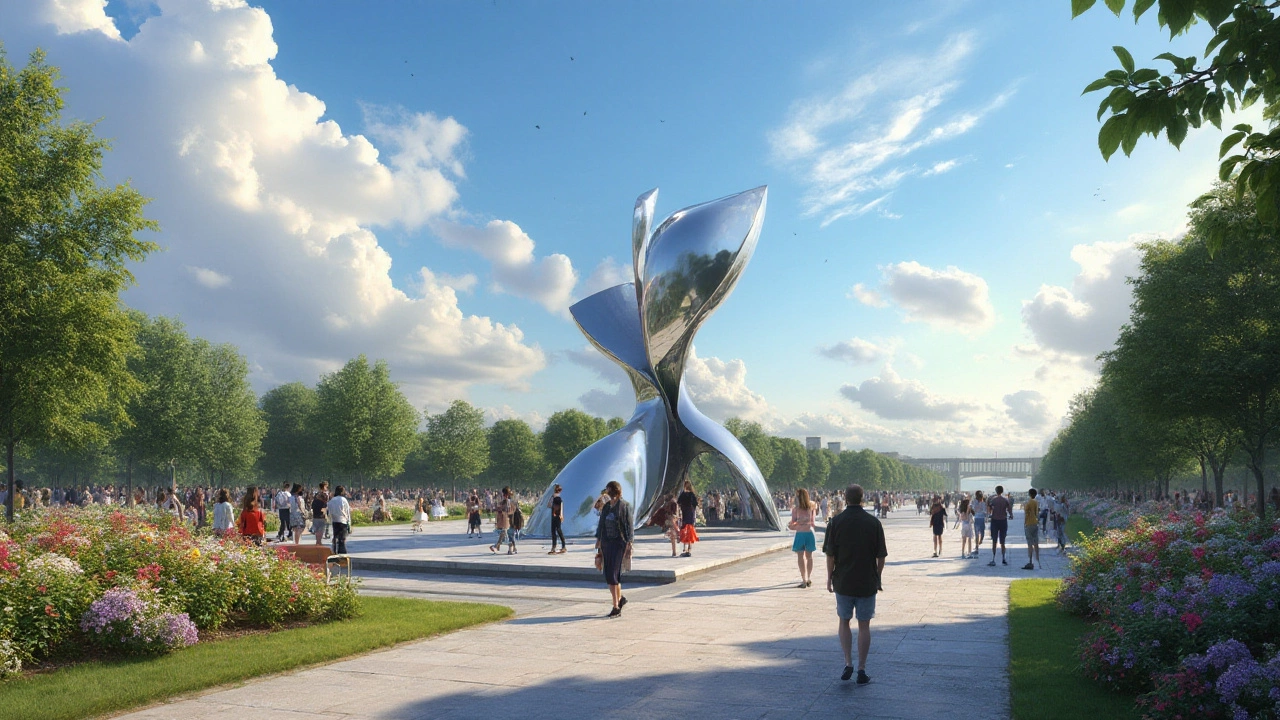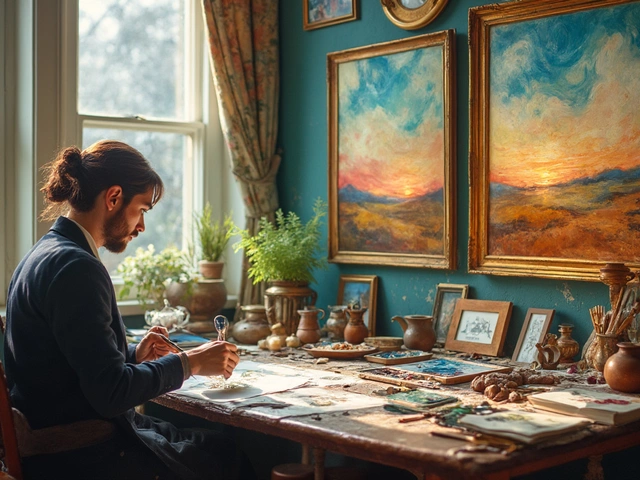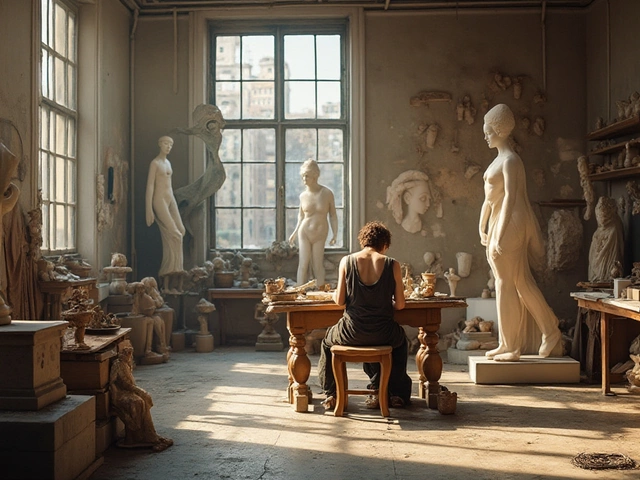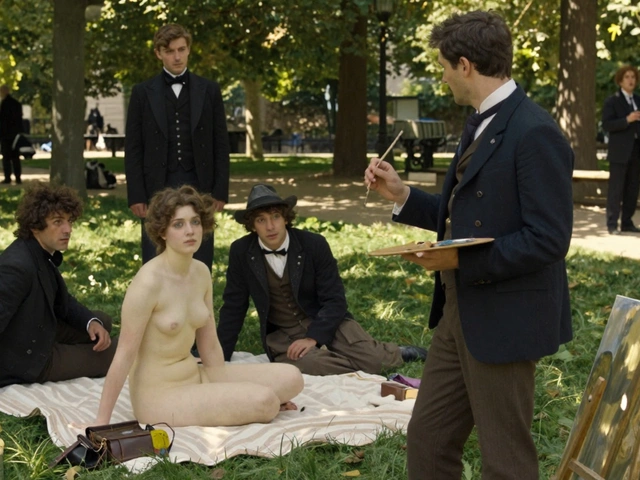Sculptures add a distinct dimension to any environment, transforming ordinary spaces into captivating narratives. Whether nestled in a cozy corner of your living room or standing majestically in a public garden, sculptures command attention and spark conversation.
The key to a successful display lies in understanding the interaction between the sculpture and its surroundings. By celebrating the space and its inherent characteristics, one can enhance the sculpture's impact and ensure its beauty is fully appreciated.
In this guide, we'll explore practical tips for sculpture placement and delve into how light, location, and design elements play a crucial role in curating the perfect artistic ambiance.
- Understanding Your Space
- Indoor Sculpture Placement
- Outdoor Sculpture Settings
- Influence of Light and Environment
Understanding Your Space
When it comes to placing a sculpture, the first step is to deeply understand the space it will inhabit. Every room or garden has its own unique flavor, shaped by elements such as size, color scheme, and existing furnishings or landscaping. A successful display harmonizes with these characteristics while allowing the sculpture to maintain its individuality. Begin by observing architectural elements like ceilings, windows, or any feature that could enhance or detract from the piece. Consider, for example, a room with high ceilings—this could provide an opportunity for a vertical sculpture to shine, drawing the eye upwards and enhancing the perception of spaciousness.
The spatial flow is also crucial. Think about how people will move through the area and how the sculpture might influence that flow. A large piece may become a central pivot point, encouraging movement around it, whereas a small but striking piece could create an intimate moment in a corner. Light is another vital component. Natural light shifting through the day can change the sculpture's appearance, adding dynamic layers to the viewing experience. Steven R. Machat, an established art dealer, once said,
"The setting of an artwork changes its voice, influencing how we perceive its story."Placing a sculpture near windows may add an engaging play of shadows, bringing it to life in ways artificial lighting might not achieve.
It's important not to overlook the emotional tone of the space. Different areas have different energies—a bustling lobby contrasts starkly with a quiet reading nook. The mood should be in harmony with the sculpture's inherent qualities. Does the art exude a sense of tranquility, playfulness, or perhaps provoke reflection? Ensuring alignment between the sculpture’s energy and its surrounding environment will lead to a more cohesive and meaningful display. Lastly, consider any cultural or historical contexts that the artwork might reflect. Historical sculptures can carry stories and traditions that resonate differently depending on where they are positioned. Understanding these nuances can elevate the connection between viewer and art piece, possibly introducing new layers of dialogue within the space.
Creating an inventory of your space and its features can be incredibly beneficial. Document the dimensions, lighting conditions, and prominent colors. A simple table like the one below can help keep track of each area’s characteristics:
| Area | Size | Light Condition | Dominant Colors |
|---|---|---|---|
| Living Room | Large | Natural, soft | Earth tones |
| Garden | Open | Full sunlight | Greens, browns |
| Study | Medium | Artificial, warm | Dark wood, navy |
Hand-in-hand with these practical observations, tune into the emotional storytelling of your space, identifying where your sculpture might fit into the narrative of your home or landscape. Such thoughtful efforts won't just showcase your art in its best light; they'll transform places into living galleries that speak volumes about both the artwork and the curator behind it.
Indoor Sculpture Placement
Bringing the world of sculpture display indoors offers a unique opportunity to juxtapose the tangible with personal space, ushering an essence of refinement and interest into any home. To begin, understanding the specific dynamics of a room is essential. Each room is a stage, and your sculptures are leading actors that tell a story through their medium. Consider the room's purpose: is it a place for gathering, reflection, or work? The nature of the room dictates the resonance of the sculpture within its walls.
The living room or entryway, often more spacious, allows larger sculptures to command attention right away. Placing a sculpture strategically where the eye naturally gravitates helps anchor the room's design, providing an immediate focal point that visitors will cherish. If space constraints arise, opt for smaller or medium-sized pieces placed on pedestals or accent tables to elevate their presence. Balancing bold and subtle hues through neighboring furniture and decor can offer a harmonious thematic expression that flows through your space.
Now, let's consider light, a critical element in enhancing and defining the appearance of a sculpture. Both natural and artificial lighting play pivotal roles, creating shadows and highlights that reveal the sculpture's textures and forms in exquisite detail. Positioning sculptures near windows provides a burst of daylight that can cast dynamic, evolving shadows throughout the day. Alternatively, adjustable track lighting or spotlighting can be implemented to discreetly illuminate and emphasize particular features of a piece when trying to create a more controlled atmosphere.
Proportionality is often understated in the dialogue of art placement, yet an appropriately scaled sculpture can dramatically alter a room's proportions, infusing a harmonious balance or intentional disparity to enliven the room's layout. Wallace Stevens, the renowned poet, once noted, "Perhaps the truth depends on a walk around the lake," illustrating the powerful shift in perception that occurs as one observes a sculpture from different angles. This experience can be echoed indoors by providing ample space around a sculpture, allowing for an immersive vantage point inviting quiet contemplation or inspiring meaningful dialogue.
When curating multiple sculptures, envision how these works will interact as an ensemble rather than standalone pieces. A cohesive collection might echo a theme, medium, or artist, or deliberately offer contrast among differing styles. Some decorators find success arranging sculptures in clusters, which mimics galleries and facilitates a gallery-like experience without overwhelming the observer. Aligning the sculptures' eye lines and dimensions ensures visual continuity even amongst the most diverse assemblages.
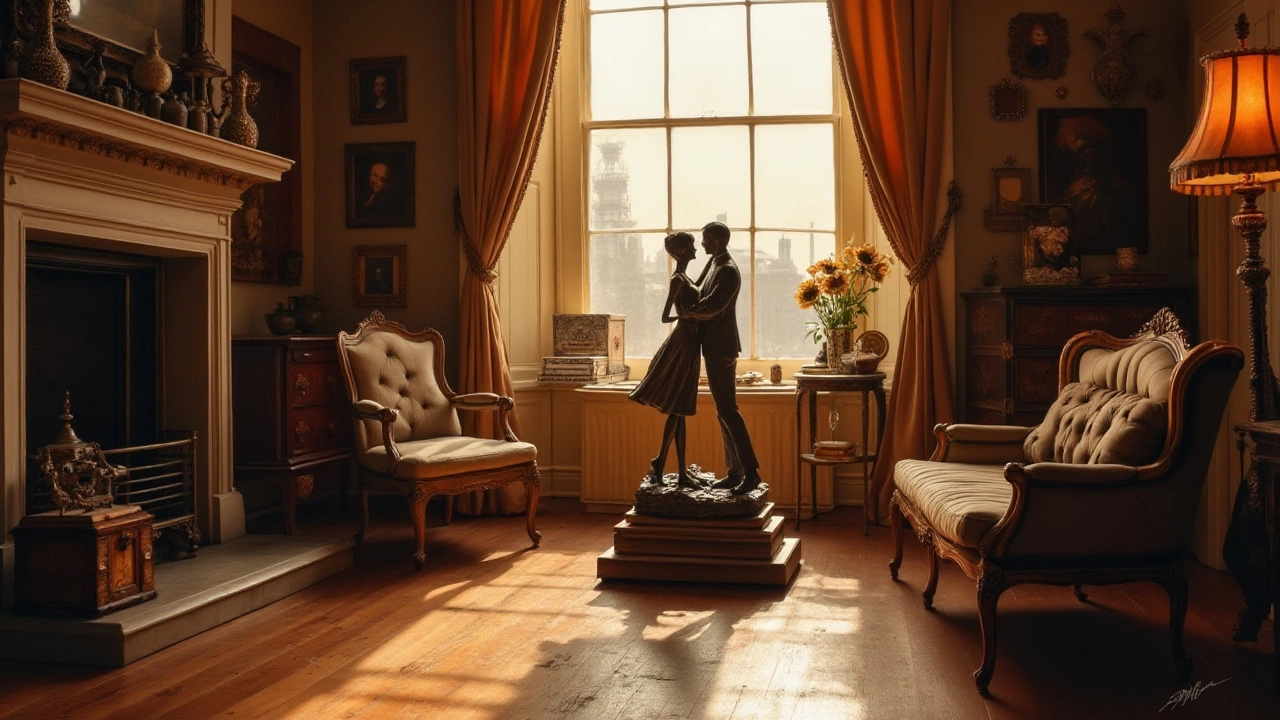
Outdoor Sculpture Settings
Stepping outside offers an entirely new dimension for displaying sculpture art. The great outdoors, with its natural light, open space, and variable weather, serves as a dynamic backdrop for artistic expression. When placing sculptures outdoors, consider how elements like sunlight, rain, and even snow will interact with the art piece. The potential for seasonal changes to alter the environment adds an exciting layer of complexity. For instance, a metal sculpture might develop a patina over time, blending beautifully with garden surroundings or starkly contrasting with a verdant lawn, depending on your desired effect. When dealing with more demanding weather conditions, ensure materials are durable. Sculpture artists often use weather-resistant alloys, stone, or treated wood. A piece crafted from marble or stainless steel will typically endure the test of time better than those made from softer materials like gypsum.
Art placement in open environments creates an emotional dialogue with passersby. Jean-Pierre Raynaud, a renowned sculptor, once said:
"To expose art literally means to leave your artwork defenseless against the elements; the consequences can often create new layers of meaning on their own."Sculptures placed along pathways or at garden crossroads captivate and guide interactions, tapping into viewers' curiosity. Additionally, outdoor sculptures in public parks often tell cultural or local historical stories, enhancing community identity and fostering connections. Choose a spot that will amplify the intent of the piece, whether as a focal point or a subtle accent in a larger setting.
Consider the role of light in outdoor settings: the sun moves across the sky, casting shadows that change throughout the day. Morning light can reveal textures in stone or metal sculptures, while evening lighting can emphasize distinct silhouettes or hide detail for a different effect. It can be beneficial to survey the intended location at different times; study how natural lighting highlights the form, texture, and color before making final placement decisions. Adding external sources of light, such as solar-powered spotlights, can complement natural illumination and highlight features during nighttime. Remember that lighting also influences the mood of the piece. A brightly lit sculpture may stand boldly, whereas softly highlighted elements invite introspection.
Maintaining an outdoor sculpture and the setting around it is essential for preserving its beauty and structural integrity. Sculptures installed in gardens or yards will likely encounter fallen leaves, dust, or encroaching plants. Regular cleaning and occasional treatment, depending on material type, can prevent deterioration. Additionally, ensure that landscaping or growth does not obscure significant portions of the art or its surroundings, though some artists use the growth purposefully to blend stone with shrubbery, creating a narrative of unity between humanity and nature. Even a carefully placed vine running along contours can create an organically changing story over time.
Here’s a quick look at weather compatibility with common sculpture materials:
| Material | Weather Compatibility |
|---|---|
| Stainless Steel | Highly resistant to rust; best for humid climates |
| Bronze | Develops patina; ideal for dry environments |
| Wood | Require treatment; excellent for moderate climates |
| Stone | Very durable; suitable for variable weather |
Finally, engage with the potential audience; think about how they will perceive and interact with the sculpture. A sculpture set in a communal space like a park should consider ease of access and safety. Provide room for viewers to circulate and reflect from multiple vantage points, especially for pieces that demand contemplation or deliver a message from distinct angles. This approach ensures the beauty and significance of the sculpture unfold naturally as part of the communal experience, enhancing both the public domain and the individual's world.
Influence of Light and Environment
When it comes to the art of displaying sculptures, the interplay of light and environment cannot be understated. The way a sculpture interacts with light can dramatically change its perception, highlighting different textures, colors, and details that might go unnoticed under a uniform light source. Natural light, with its ever-changing qualities throughout the day, can impart a dynamic characteristic to sculptures. Imagine a bronze piece catching the morning sun, casting elongated shadows that gradually shift as the day progresses, breathing life into the art ensconced within its form.
The direction and angle of light play crucial roles in how sculptures are perceived. Direct sunlight might wash out subtle nuances, while too little light can leave intricate surfaces in the dark. Indoor sculptures benefit greatly from spotlighting, where carefully positioned lamps offer the flexibility of adjusting the light source to highlight art from different perspectives. Techniques like grazing light, where light is cast from a low angle, can emphasize surface textures and carve out shadows that accentuate form, creating a visual effect that invites closeness and wonder.
Environmental factors, stretching from temperature to humidity, can also have significant implications, particularly for outdoor sculptures. For instance, materials like metal are highly susceptible to rust in areas near the coast due to the saline atmosphere, while wood might contract and expand with fluctuations in humidity, potentially leading to cracks. Therefore, understanding the innate qualities of the material is paramount to its preservation. Sculptors often aim for finishes that weather well without compromising aesthetic integrity. Patinas, for example, are popular not only for their unique appearance but also for the protection they offer against the elements.
Urban and natural settings present different challenges when it comes to sculpture placement. In urban environments, sculptures are often dwarfed by towering buildings, potentially obscured by shadows. However, these settings also provide unique opportunities for engagement, blending art with the rhythm of city life. Integrating sculptures with surrounding architecture can create thought-provoking contrasts or harmonious extensions of the built landscape. Michael Heizer, a noted land artist, once said,
"It's about building positive friction between art and its context, letting each amplify the other while challenging the beholder's perception."
Lighting Techniques for Indoor Sculptures
- Spotlighting: Ideal for creating focused illumination. Consider adjustable lamps that allow you to alter direction and distance.
- Uplighting: Placing lights at the base of sculptures can grant a dramatic upward glow, flattering elongated shapes and towering pieces.
- Diffused Light: Excellent for highlighting subtle textures. Using frosted bulbs can result in gentle, even lighting.
- Color Temperature: Warm lights (around 2700K) might be more flattering to bronze and gold, while cooler lights can complement silver tones.
For those keen on bringing their sculpture art to the outdoors, selecting the site is crucial to maximizing visibility while ensuring the sculpture itself remains unblemished by environmental factors. While a busy park might expose a wider audience to the piece, secluded gardens offer tranquil settings where intricate details are appreciated in solitude. At the end of the day, understanding the impact of light and environment upon your sculpture encourages a deeper engagement with art, revealing stories carved, cast, or molded in the artist's vision.
